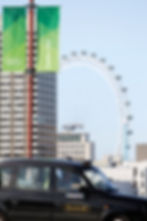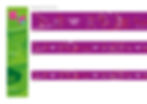As the greatest sporting event in the world, the London Olympic and Paralympic Games united a global audience of over 4.8 billion people in the desire to extend the boundaries of human ability.
The Look of the Games played a key role in defining the way the world perceived London, the UK and the Games themselves. But branding an Olympic and Paralympic Games is the most complex design and implementation programme in sport.
The first part of the challenge for the London 2012 Look team, was to create a memorable, meaningful and impactful brand that delivered against the promises of the bid. The vision was to make it coherent and cohesive across all facets of the Games.
The second part of the challenge was to manage the scale of the programme; everything from scoping and production, to delivery and installation for all the venues, towns and cities across the UK in very tight timescales.




























London 2012 Kit of Parts
With 44 competition venues, over 100 non-competition venues, as well as all areas of the Government Olympic Executive and Greater London Authority City Look, it was essential to deliver a cost effective solution to the London 2012 branding.
Progressing the concept of a 'kit of parts' to accommodate the complex venue colour strategy, hundreds of elements were visualised, designed and artworked to allow the install teams pick and pack options that gave clear branding as well as customisable creative options.
With over 1 million items produced, it was essential to maximise production by standardising elements wherever possible.
As part of this process, a generic spectator journey was created to help map the asset journey throughout the city to the venues. This helped inform which assets would be used and where, making it easier for the various stakeholders to order and implement the correct items.




















London 2012 Colour Strategy
Creating distinctive identities for each of the sports and venues was core to the Look team's ambition. Using the Field of Play and the sports themselves as inspiration, a pairing of two colours from the Look palette was chosen to communicate the energy level, speed and intensity of the individual sports and the nature of their respective venues.
Once the construction of the venues was finished, it was time to overlay them with the Look. The challenge was to create a dynamic, celebratory atmosphere within common domains, using the colour palette effectively to give a memorable visitor experience, exceed spectator expectation and to help drive the wayfinding with the colour strategy.
Lamposts in the main thoroughfares in the Olympic Park were hung with vivid silkscreen banners from the Kit of Parts, to help guide spectators towards their venues by using the same colour strategy that appeared on their tickets.










































London 2012 City Look
A unified, recognisable identity across the whole of the UK was one of the Look team's major objectives. In a first for London 2012, the IOC and IPC agreed to allow 'dual branding'. The dual branding agreement not only meant that the dressing stayed up longer, but also that budgets stretched further, logistics were improved and wastage was reduced.
Using Kit Of Parts elements, a style guide was created detailing how the multi colour identity should be strategically deployed, giving brand consistency across the nation.
















London 2012 Colour Consistency
Delivering colour consistency is vital to good branding, especially when you are using colour to help people to navigate new environments. In order to ensure consistency, the Look Studio created all artwork within a defined, profiled colour space. With calibrated in-house colour proofing, a profile focused PDF workflow and regulated suppliers, the files that went into production delivered measurable consistency across all substrates.
At each stage of the production process, substrates were checked against pre-approved masters. This also meant that when all the UK print suppliers were maxed out with production, it was a simple task to bring on a new supplier from abroad.


















London 2012 Grandstands
Many venues for the London 2012 Olympic and Paralympic Games were temporary, but in order to enhance the spectator experience, everything was done to make these venues feel well established and easily navigable.
Budget restrictions and wind loading meant that completely covering them was not an option, so a design was needed that offered visual impact, great branding as well as clear wayfinding and signage.








